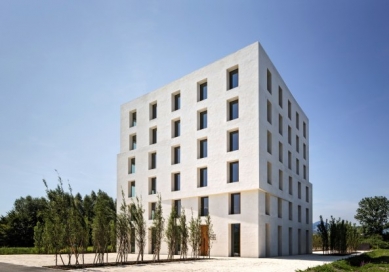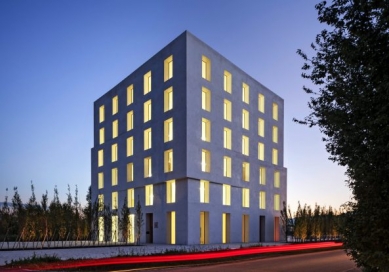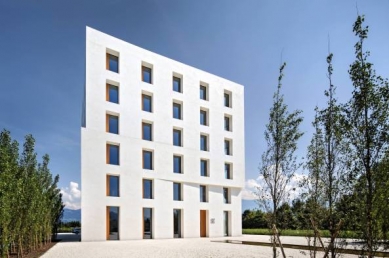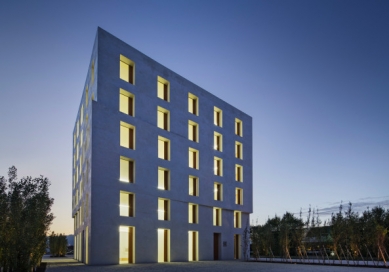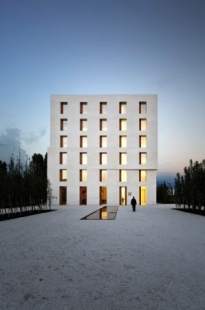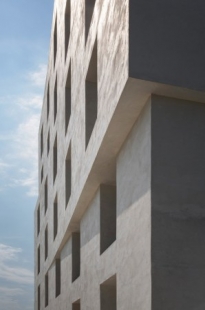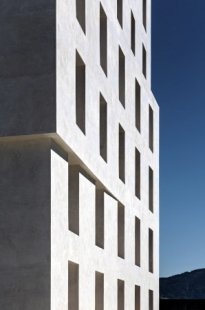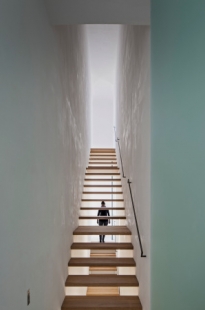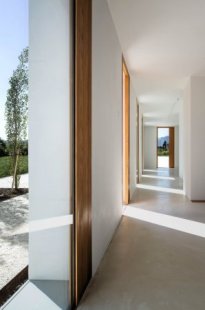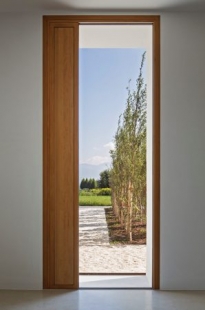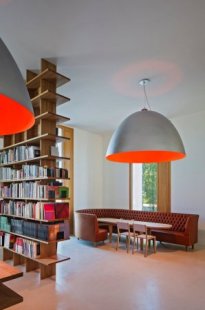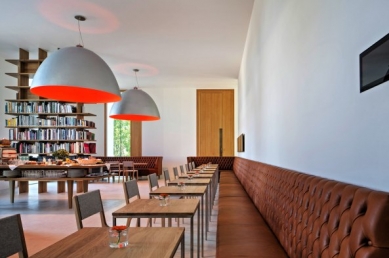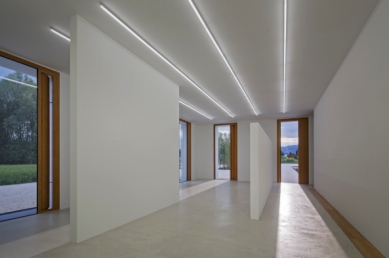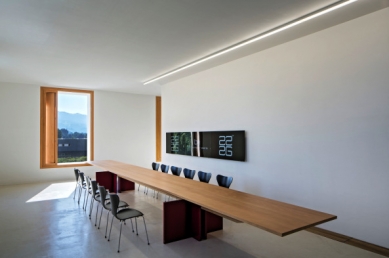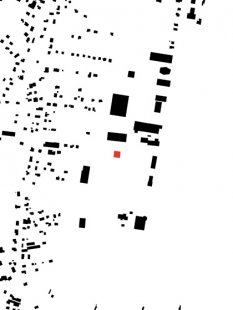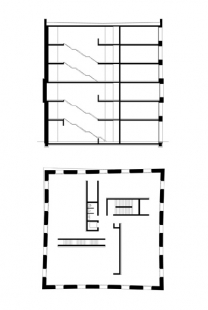
Administrative building in Lustenau by Baumschlager Eberle
The twenty-thousand city Lustenau primarily benefits from its border location. A narrow strip of the Rhine River separates the city from Switzerland before it flows into Lake Constance, and it is within sight of the German borders from nearby Bregenz. For this reason, the Millennium Park complex was able to develop on the eastern edge of Lustenau, which is not only an incubator for ambitious Austrian companies but also a gallery of modern architecture by Vorarlberg architects. The place soon earned the nickname 'Silicon Valley of the Rhine', where not only technology firms are located but also advanced industrial companies and sectors linked to Formula 1. Based on the focus of the companies, traditional Vorarlberg chalets cannot be expected, but even in these designs, one can see a sense of responsibility towards the environment, an effort to reduce the impact on the surroundings, and to create the most pleasant conditions for living and working.
One of the latest additions to Millennium Park is “Bürohaus 2226” from the local studio Baumchlager Eberle, which has served as their new office headquarters since July 2013. On the ground floor of the building, there is a café that serves not only the public but also other tenants of the building.
The architects set themselves a simple task: to consume as little energy as possible in the building and to use less technology. Until now, lower energy consumption had to be paid for with increased operating and maintenance costs. This building operates without heating, cooling, or ventilation. The house offers optimal energy utilization. The technical systems do not respond to the needs of the building but to its users. They react to body temperature, humidity, and the conversion of oxygen to carbon dioxide. Control units are connected to sensors that are affixed to the windows on the ventilation wings from the inside. Simple and massive building components also serve to accumulate thermal energy. The outer shell consists of 76 centimeters thick brick masonry. The compact cubic form aids in the efficient use of energy, and the durable lime plaster allows for the natural breathing of the house. Since the building became operational, the temperature inside has remained within an acceptable range of 22 to 26 ºC, which gave the entire project the nickname “Bürohaus 2226".
More information >
One of the latest additions to Millennium Park is “Bürohaus 2226” from the local studio Baumchlager Eberle, which has served as their new office headquarters since July 2013. On the ground floor of the building, there is a café that serves not only the public but also other tenants of the building.
The architects set themselves a simple task: to consume as little energy as possible in the building and to use less technology. Until now, lower energy consumption had to be paid for with increased operating and maintenance costs. This building operates without heating, cooling, or ventilation. The house offers optimal energy utilization. The technical systems do not respond to the needs of the building but to its users. They react to body temperature, humidity, and the conversion of oxygen to carbon dioxide. Control units are connected to sensors that are affixed to the windows on the ventilation wings from the inside. Simple and massive building components also serve to accumulate thermal energy. The outer shell consists of 76 centimeters thick brick masonry. The compact cubic form aids in the efficient use of energy, and the durable lime plaster allows for the natural breathing of the house. Since the building became operational, the temperature inside has remained within an acceptable range of 22 to 26 ºC, which gave the entire project the nickname “Bürohaus 2226".
More information >
The English translation is powered by AI tool. Switch to Czech to view the original text source.
